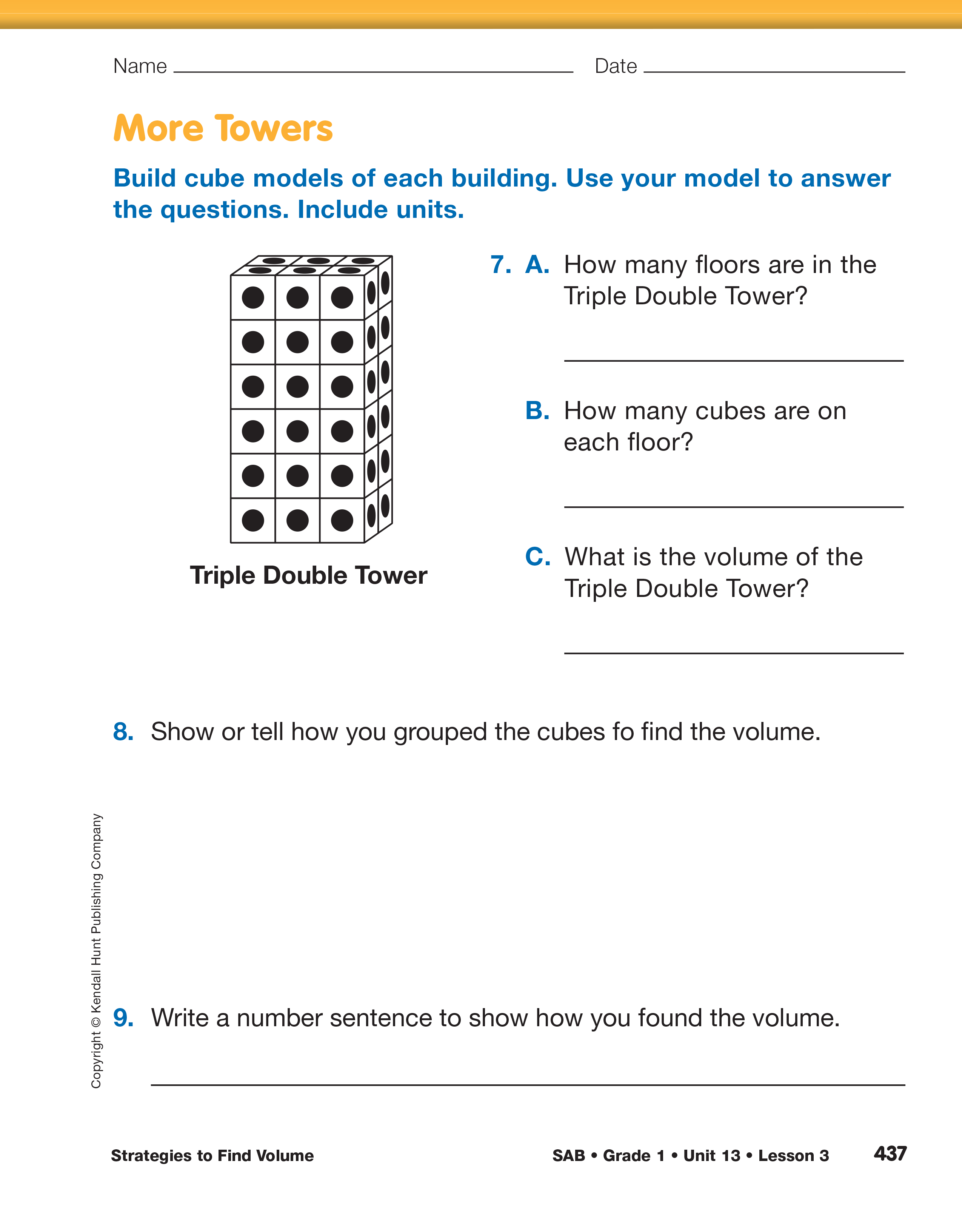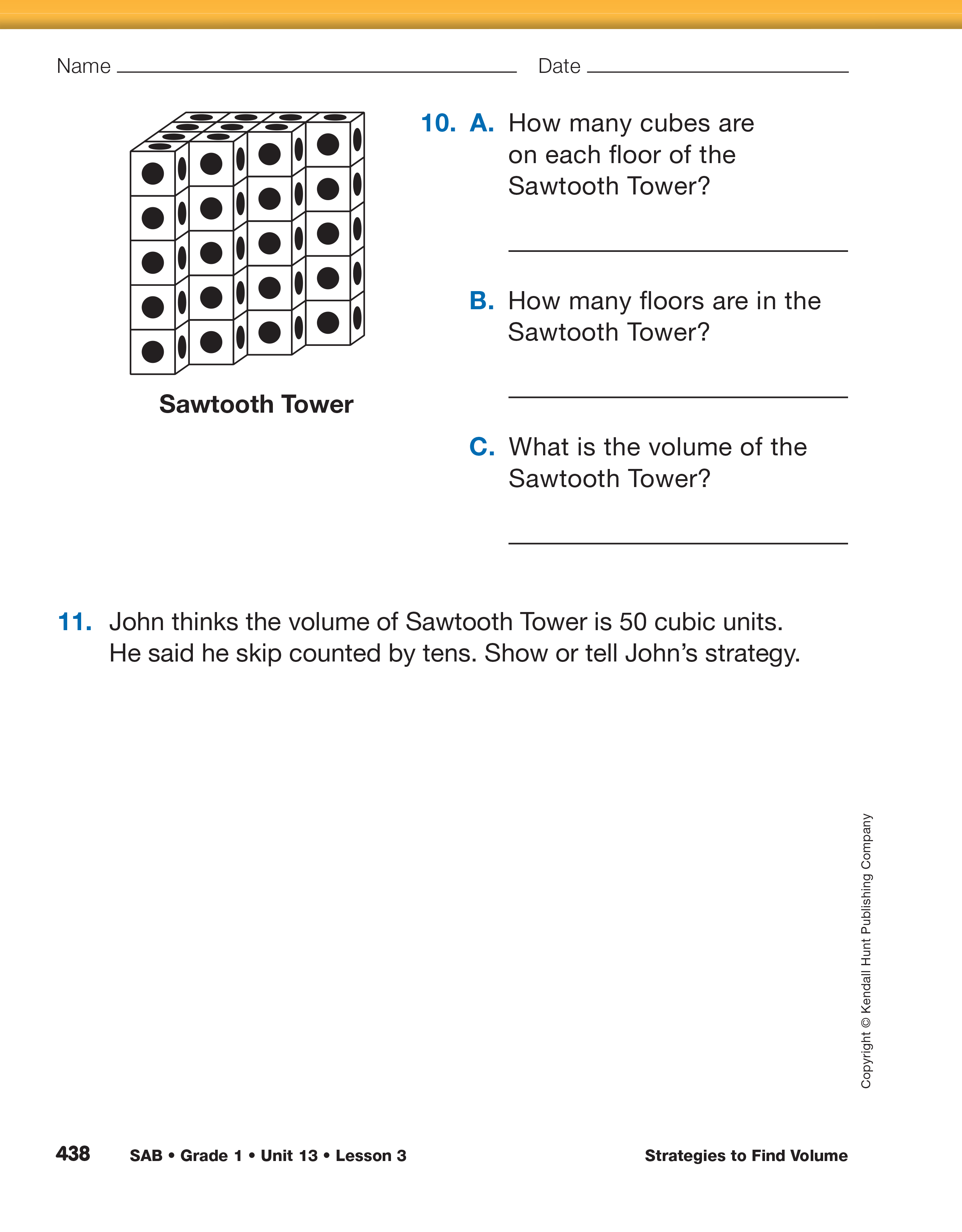Strategies to Find Volume
Est. Class Sessions: 2Developing the Lesson
Part 2. Cube Models with Some Cubes Hidden
Show the display of the TIMS Towers 2 Master.
Ask:
Direct students to the More Towers section of the TIMS Towers pages in their Student Activity Book. Show a display of the Rules for Cube Buildings Master from Lesson 1.
Ask:
Provide time for students to work with their partner to complete Questions 7–11.
Students can take several different solution paths to find the volume of these towers. As you circulate through the class, note students using various strategies to include in discussion when work is done.
As students work through each problem, keep asking questions to foster use of a variety of strategies to determine the volume of each tower using prompts similar to the following:
When students have finished, conduct a class discussion eliciting the various strategies used to find the volume of the two towers. Foster discussion to include various decomposition strategies (grouping by columns and breaking towers into rectangular prisms) and various counting strategies (counting by tens and counting on, skip counting by twos, threes, fives, or tens, doubling, and using repeated addition on the calculator).
The Sample Dialog shows a possible discussion of strategies used to find the volume of the Triple Double Tower.















